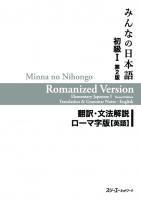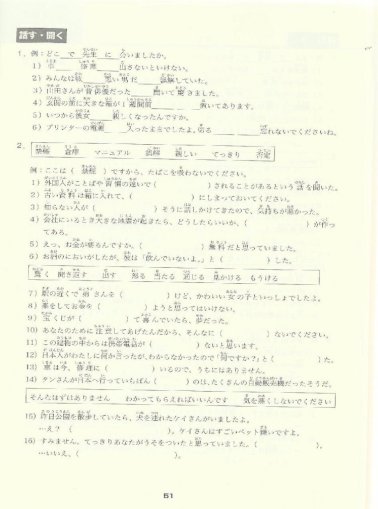

Includes 20 topics for you to practice writing, to a certain lesson you can write (clearly noted in the book).

The songs are suitable for beginners, with a script at the end of the booklet when you can’t hear it. There is a similar role in reading books but listening comprehension. It is a reading comprehension book corresponding to the Minna no Nihongo, while learning grammar in the book itself, you can reading in this book. Book of Bunkei Renshuuchou exercisesīook of grammar exercises, lots of diverse and rich exercises. According to my own experience, when you start learning, you should join a Japanese class so that you can be guided on how to learn effectively and effectively, avoid wasting time, and will be less “shocked”.Īfter finishing primary school 1, forming your own method of learning, this stage you can fully learn effectively at home with the Minna no Nihongo! 3. But contraindicated that this journey will be very difficult. But if there are faith and really hard work, I believe that you can fully learn to be good at this language.
Grammatical explanation: explain the structure, usage of grammar patterns included in the lesson, including the accompanying examples, very detailed and easy to understand. Words and reference information: Reference information and vocabulary are not mentioned but are related to the content and topic of the lesson. 
Translation: Translating the bunkei, reibun and kaiwa sections in the main book into Vietnamese. Vocabulary: List new words related to the lesson and the topic of the lesson. 問題 (Mondai) – Problem: Listening and writing exercises, using grammar patterns included in the lesson. 練習 C (renshuuC) – Practice C: Conversation exercises using the sentence patterns learned in the lesson. 練習 B (renshuu B) – Practice B: Simple exercises that apply the grammar structure learned in the lesson. 練習 A (renshuu A) – Practice A: Summary of grammatical structures in the lesson. 会話 (kaiwa) – Conversation: The main conversation situation in the lesson (used in the “conversation” section of the translation book). 例文 (reibun) – Example: Sample dialogs use the grammar structure in the lesson (translated in “Example” in the translation book). 文 型 (bunkei) – Sample sentence: Sample sentences use a grammatical structure in the lesson (translated in the “sentence form” in the translation book).







 0 kommentar(er)
0 kommentar(er)
